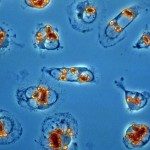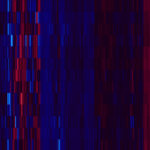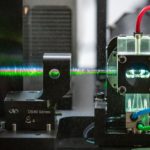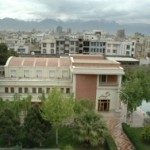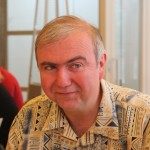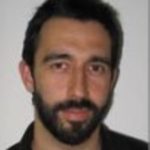Link to Pubmed [PMID] – 32582184
Link to DOI – 10.3389/fimmu.2020.01098
Front Immunol 2020 ; 11(): 1098
Leishmania parasites are the causative agents of human leishmaniases. They infect professional phagocytes of their mammalian hosts, including dendritic cells (DCs) that are essential for the initiation of adaptive immune responses. These immune functions strictly depend on the DC’s capacity to differentiate from immature, antigen-capturing cells to mature, antigen-presenting cells-a process accompanied by profound changes in cellular phenotype and expression profile. Only little is known on how intracellular Leishmania affects this important process and DC transcriptional regulation. Here, we investigate these important open questions analyzing phenotypic, cytokine profile and transcriptomic changes in murine, immature bone marrow-derived DCs (iBMDCs) infected with antibody-opsonized and non-opsonized Leishmania amazonensis (L.am) amastigotes. DCs infected by non-opsonized amastigotes remained phenotypically immature whereas those infected by opsonized parasites displayed a semi-mature phenotype. The low frequency of infected DCs in culture led us to use DsRed2-transgenic parasites allowing for the enrichment of infected BMDCs by FACS. Sorted infected DCs were then subjected to transcriptomic analyses using Affymetrix GeneChip technology. Independent of parasite opsonization, Leishmania infection induced expression of genes related to key DC processes involved in MHC Class I-restricted antigen presentation and alternative NF-κB activation. DCs infected by non-opsonized parasites maintained an immature phenotype and showed a small but significant down-regulation of gene expression related to pro-inflammatory TLR signaling, the canonical NF-kB pathway and the NLRP3 inflammasome. This transcriptomic profile was further enhanced in DCs infected with opsonized parasites that displayed a semi-mature phenotype despite absence of inflammasome activation. This paradoxical DC phenotype represents a Leishmania-specific signature, which to our knowledge has not been observed with other opsonized infectious agents. In conclusion, systems-analyses of our transcriptomics data uncovered important and previously unappreciated changes in the DC transcription factor landscape, thus revealing a novel Leishmania immune subversion strategy directly acting on transcriptional control of gene expression. Our data raise important questions on the dynamic and reciprocal interplay between trans-acting and epigenetic regulators in establishing permissive conditions for intracellular Leishmania infection and polarization of the immune response.
